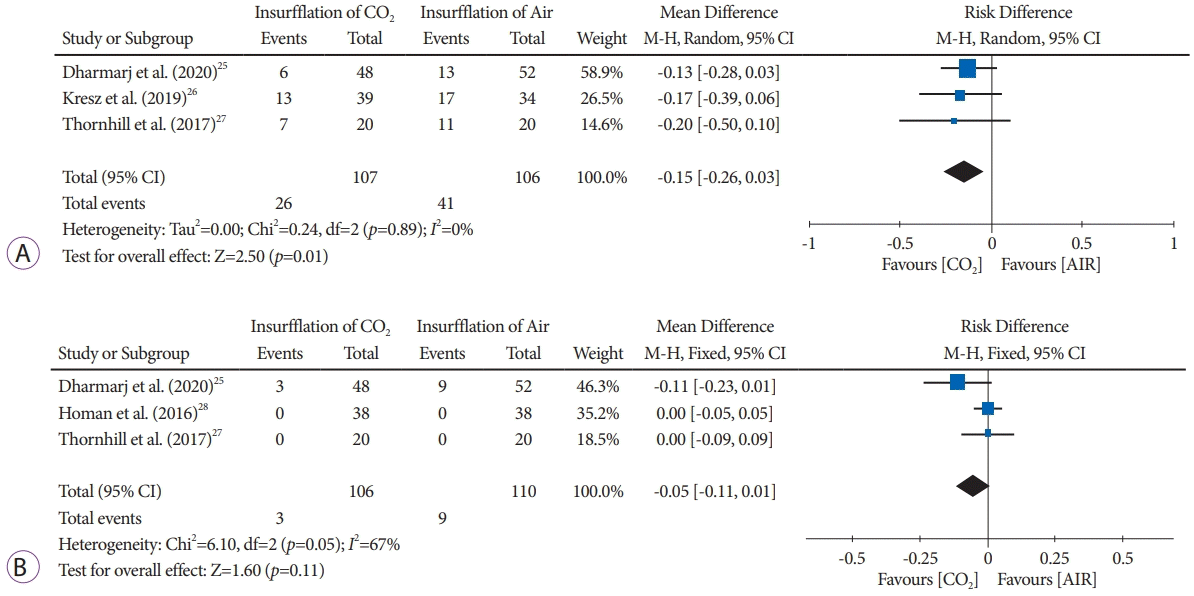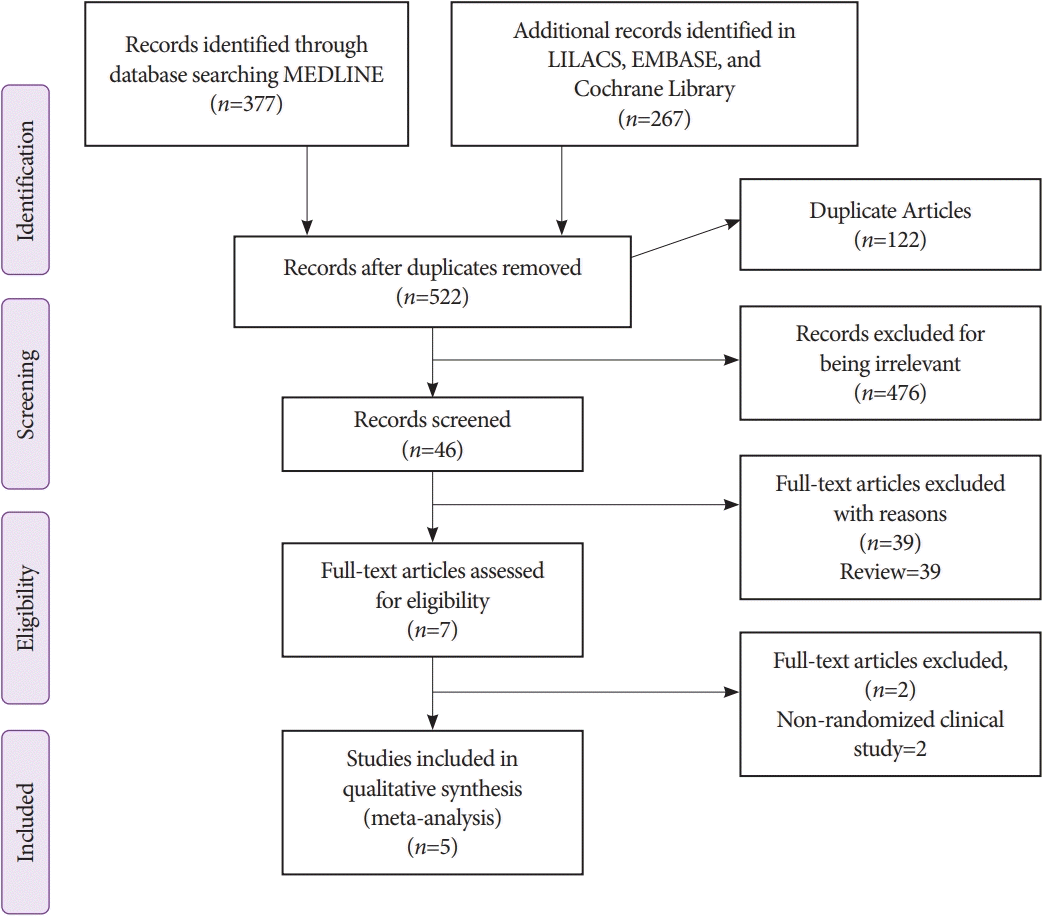1. Thomson M, Tringali A, Dumonceau J-M, et al. Paediatric gastrointestinal endoscopy. J Pediatr Gastroenterol Nutr. 2017; 64:133–153.
2. Kiani M-A, Khodadad A, Mohammadi S, et al. Effect of peppermint on pediatrics’ pain under endoscopic examination of the large bowel. J HerbMed Pharmacol. 2013; 2:41–44.
3. Yoshioka S, Takedatsu H, Fukunaga S, et al. Study to determine guidelines for pediatric colonoscopy. World J Gastroenterol. 2017; 21(23):5773.

4. Rocha RS de P, Ribeiro IB, de Moura DTH, et al. Sodium picosulphate or polyethylene glycol before elective colonoscopy in outpatients? a systematic review and meta-analysis. World J Gastrointest Endosc. 2018; 16(10):422–441.
5. de Moura DT, Guedes H, Tortoretto V, et al. [Comparison of colon-cleansing methods in preparation for colonoscopy-comparative of solutions of mannitol and sodium picosulfate]. Rev Gastroenterol Peru. 2016; 36:293–297.
6. Chen Y-J, Lee J, Puryear M, et al. A Randomized controlled study comparing room air with carbon dioxide for abdominal pain, distention, and recovery time in patients undergoing colonoscopy. Gastroenterol Nurs. 2014; 37:273–278.

7. Kim SY, Chung J-W, Park DK, et al. Comparison of carbon dioxide and air insufflation during consecutive EGD and colonoscopy in moderate-sedation patients: a prospective, double-blind, randomized controlled trial. Gastrointest Endosc. 2017; 85:1255–1262.
8. Fernández-Calderón M, Muñoz-Navas MÁ, Carrascosa-Gil J, et al. Carbon dioxide vs. air insufflation in ileo-colonoscopy and in gastroscopy plus ileo-colonoscopy: a comparative study. Rev Esp Enferm Dig. 2012; 104:237–241.

9. de Miranda Neto AA, de Moura DTH, Hathorn KE, Tustumi F, de Moura EGH, Ribeiro IB. Efficacy and patient tolerability of split-dose sodium picosulfate/magnesium citrate (SPMC) oral solution compared to the polyethylene glycol (PEG) solution for bowel preparation in outpatient colonoscopy: an evidence-based review. Clin Exp Gastroenterol. 2020; 13:449–457.
10. Victoria NC, Murphy AZ. Exposure to early life pain: long term consequences and contributing mechanisms. Curr Opin Behav Sci. 2016; 7:61–68.

11. Lee GY, Yamada J, Kyololo O, Shorkey A, Stevens B. Pediatric clinical practice guidelines for acute procedural pain: a systematic review. Pediatrics. 2014; 133:500–515.

12. Kiani MA, Heydarian F, Feyzabadi Z, Saeidi M, Jafari SA, Hebrani P. Effect of music and toys on reducing pain during colonoscopy and acceptance of colonoscopy by children: a randomized clinical trial. Electron physician. 2019; 11:7652–7659.

13. Memon MA, Memon B, Yunus RM, Khan S. Carbon dioxide versus air insufflation for elective colonoscopy. Surg Laparosc Endosc Percutan Tech. 2016; 26:102–116.

14. Nishizawa T, Suzuki H, Fujimoto A, Ochiai Y, Kanai T, Naohisa Y. Effects of carbon dioxide insufflation in balloon-assisted enteroscopy: a systematic review and meta-analysis. United Eur Gastroenterol J. 2016; 4:11–17.

15. Nambu R, Hagiwara S-I, Kakuta F, et al. Current role of colonoscopy in infants and young children: a multicenter study. BMC Gastroenterol. 2019; 19:149.

16. Ribeiro IB, Moura DTH de, Thompson CC, Moura EGH de. Acute abdominal obstruction: colon stent or emergency surgery? an evidence-based review. World J Gastrointest Endosc. 2019; 11:193–208.

17. Rogers BH. The safety of carbon dioxide insufflation during colonoscopic electrosurgical polypectomy. Gastrointest Endosc. 1974; 20:115–117.
18. Dellon ES, Hawk JS, Grimm IS, Shaheen NJ. The use of carbon dioxide for insufflation during GI endoscopy: a systematic review. Gastrointest Endosc. 2009; 69:843–849.

19. Passos ML, Ribeiro IB, de Moura DTH, et al. Efficacy and safety of carbon dioxide insufflation versus air insufflation during endoscopic retrograde cholangiopancreatography in randomized controlled trials: a systematic review and meta-analysis. Endosc Int open. 2019; 7:E487–E497.

20. Aquino JCM, Bernardo WM, de Moura DTH, et al. Carbon dioxide versus air insufflation enteroscopy: a systematic review and meta-analysis based on randomized controlled trials. Endosc Int Open. 2018; 06:E637–E645.

21. Liberati A, Altman DG, Tetzlaff J, et al. The PRISMA statement for reporting systematic reviews and meta-analyses of studies that evaluate health care interventions: explanation and elaboration. J Clin Epidemiol. 2009; 62:e1–e34.

22. Sterne JAC, Savović J, Page MJ, et al. RoB 2: a revised tool for assessing risk of bias in randomised trials. BMJ. 2019; 366:l4898.

23. Hozo SP, Djulbegovic B, Hozo I. Estimating the mean and variance from the median, range, and the size of a sample. BMC Med Res Methodol. 2005; 5:13.

24. Dike CR, Rahhal R, Bishop WP. Is carbon dioxide insufflation during endoscopy in children as safe and as effective as we think? J Pediatr Gastroenterol Nutr. 2020; 71:211–215.

25. Dharmaraj R, Dunn R, Fritz J, et al. Efficacy and safety of carbon dioxide versus air insufflation for colonoscopy in deeply sedated pediatric patients. J Pediatr Gastroenterol Nutr. 2020; 71:34–39.

26. Kresz A, Mayer B, Zernickel M, Posovszky C. Carbon dioxide versus room air for colonoscopy in deeply sedated pediatric patients: a randomized controlled trial. Endosc Int Open. 2019; 07:E290–E297.

27. Thornhill C, Navarro F, Alabd Alrazzak B,, et al. Insufflation with carbon dioxide during pediatric colonoscopy for control of postprocedure pain. J Clin Gastroenterol. 2018; 52:715–720.

28. Homan M, Mahkovic D, Orel R, Mamula P. Randomized, double-blind trial of CO2 versus air insufflation in children undergoing colonoscopy. Gastrointest Endosc. 2016; 83:993–997.

29. de Moura DT, Guedes H, Tortoretto V, et al. Comparison of colon-cleansing methods in preparation for colonoscopy-comparative of solutions of mannitol and sodium picosulfate. Rev Gastroenterol Peru. 2016; 36:293–297.
30. Saltzman HA, Sieker HO. Intestinal response to changing gaseous environments: normobaric and hyperbaric observations. Ann N Y Acad Sci. 1968; 150:31–39.

31. Sajid MS, Caswell J, Bhatti MI, Sains P, Baig MK, Miles WFA. Carbon dioxide insufflation vs conventional air insufflation for colonoscopy: a systematic review and meta-analysis of published randomized controlled trials. Color Dis. 2015; 17:111–123.
32. Bassan MS, Holt B, Moss A, Williams SJ, Sonson R, Bourke MJ. Carbon dioxide insufflation reduces number of postprocedure admissions after endoscopic resection of large colonic lesions: a prospective cohort study. Gastrointest Endosc. 2013; 77:90–95.

33. Coronel M, Korkischko N, Bernardo WM, et al. Comparison between carbon dioxide and air insufflation in colonoscopy: a systematic review and meta-analysis based on randomized control trials. J Gastroenterol Pancreatol Liver Disord. 2017; 4:1–11.

34. Rogers AC, Van De Hoef D, Sahebally SM, Winter DC. A meta-analysis of carbon dioxide versus room air insufflation on patient comfort and key performance indicators at colonoscopy. Int J Colorectal Dis. 2020; 35:455–464.

35. HoRutterzo MD, Chattree A, Barbour JA, et al. British Society of Gastroenterology/Association of Coloproctologists of Great Britain and Ireland guidelines for the management of large non-pedunculated colorectal polyps. Gut. 2015; 64:1847–1873.

36. Valori R, Rey J-F, Atkin W, et al. European guidelines for quality assurance in colorectal cancer screening and diagnosis. First Edition – Quality assurance in endoscopy in colorectal cancer screening and diagnosis. Endoscopy. 2012; 44(Suppl 3):SE88–SE105.

37. Paspatis GA, Dumonceau J-M, Barthet M, et al. Diagnosis and management of iatrogenic endoscopic perforations: European Society of Gastrointestinal Endoscopy (ESGE) Position Statement. Endoscopy. 2014; 46:693–711.







 PDF
PDF Citation
Citation Print
Print




 XML Download
XML Download